-
 Bitcoin
Bitcoin $107,341.7259
0.15% -
 Ethereum
Ethereum $2,438.6204
0.70% -
 Tether USDt
Tether USDt $1.0003
-0.02% -
 XRP
XRP $2.1866
1.94% -
 BNB
BNB $649.0952
0.36% -
 Solana
Solana $150.9602
5.63% -
 USDC
USDC $0.9999
0.00% -
 TRON
TRON $0.2742
0.40% -
 Dogecoin
Dogecoin $0.1645
1.93% -
 Cardano
Cardano $0.5669
1.18% -
 Hyperliquid
Hyperliquid $37.8286
4.19% -
 Bitcoin Cash
Bitcoin Cash $491.4669
-2.74% -
 Sui
Sui $2.8150
3.06% -
 Chainlink
Chainlink $13.4184
2.91% -
 UNUS SED LEO
UNUS SED LEO $9.0809
0.27% -
 Avalanche
Avalanche $18.0295
2.60% -
 Stellar
Stellar $0.2396
1.19% -
 Toncoin
Toncoin $2.8587
0.13% -
 Shiba Inu
Shiba Inu $0.0...01160
2.59% -
 Litecoin
Litecoin $86.4192
1.45% -
 Hedera
Hedera $0.1486
1.19% -
 Monero
Monero $308.4324
0.87% -
 Polkadot
Polkadot $3.4202
1.43% -
 Bitget Token
Bitget Token $4.6436
-0.34% -
 Dai
Dai $0.9998
-0.02% -
 Ethena USDe
Ethena USDe $1.0002
0.00% -
 Uniswap
Uniswap $7.1527
3.29% -
 Pi
Pi $0.5357
-8.45% -
 Pepe
Pepe $0.0...09588
4.61% -
 Aave
Aave $259.9759
0.81%
How is Bybit's liquidation price calculated? What is the forced liquidation mechanism?
Bybit's sophisticated system manages leveraged trading risk through liquidation price calculation and forced liquidation, crucial for traders to avoid unexpected losses.
May 13, 2025 at 09:14 pm
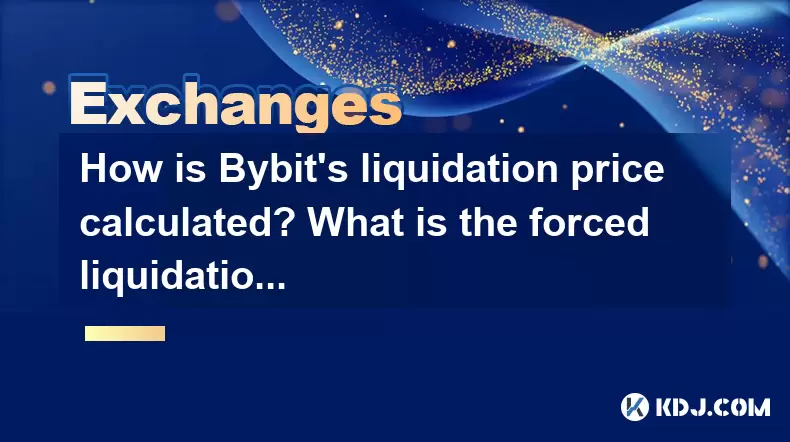
Bybit, a leading cryptocurrency exchange, employs a sophisticated system to manage the risk associated with leveraged trading. One of the critical components of this system is the calculation of the liquidation price and the forced liquidation mechanism. Understanding these concepts is essential for traders to manage their positions effectively and avoid unexpected losses.
Understanding Liquidation Price on Bybit
The liquidation price on Bybit is the price at which a trader's position is automatically closed to prevent further losses. This price is calculated based on several factors, including the entry price, the amount of leverage used, and the maintenance margin requirement. The formula for calculating the liquidation price varies depending on whether the position is long or short.
For a Long Position: The liquidation price is calculated as follows:
[
\text{Liquidation Price} = \frac{\text{Entry Price}}{(1 + \text{Maintenance Margin Rate} \times \text{Leverage})}
]
Here, the entry price is the price at which the position was opened, the maintenance margin rate is the minimum amount of margin required to keep the position open, and leverage is the amount of borrowed funds used to open the position.For a Short Position: The liquidation price is calculated as follows:
[
\text{Liquidation Price} = \frac{\text{Entry Price}}{(1 - \text{Maintenance Margin Rate} \times \text{Leverage})}
]
The variables remain the same as in the long position calculation, but the formula adjusts to account for the direction of the trade.
Factors Affecting Liquidation Price
Several factors can influence the liquidation price on Bybit:
Leverage: Higher leverage increases the risk of liquidation because it amplifies both gains and losses. The higher the leverage, the closer the liquidation price will be to the entry price.
Maintenance Margin Rate: This is the minimum amount of margin required to keep a position open. Bybit sets this rate, and it can vary depending on the asset being traded. A higher maintenance margin rate means a lower liquidation price for long positions and a higher liquidation price for short positions.
Position Size: The size of the position also affects the liquidation price. Larger positions require more margin, which can move the liquidation price closer to the entry price.
Forced Liquidation Mechanism on Bybit
The forced liquidation mechanism is a process that Bybit uses to close a trader's position automatically when the market price reaches the liquidation price. This mechanism is designed to protect both the trader and the exchange from further losses.
Triggering Liquidation: When the market price hits the liquidation price, Bybit's system automatically initiates the liquidation process. The position is closed at the best available market price to minimize losses.
Liquidation Priority: Bybit uses a risk-based priority system for liquidations. Positions with higher risk (higher leverage or larger size) are liquidated first to ensure the stability of the platform.
Auto-Deleveraging (ADL): In rare cases where the market moves too quickly, and there are not enough opposing orders to close a position at the liquidation price, Bybit may use the Auto-Deleveraging (ADL) system. This system closes profitable positions of other traders to cover the losses of the liquidated position.
How to Calculate Your Own Liquidation Price
Traders can calculate their own liquidation price using the formulas provided above. Here are the steps to do so:
Identify Your Entry Price: This is the price at which you opened your position.
Determine Your Leverage: This is the amount of leverage you used to open your position.
Find the Maintenance Margin Rate: This rate is set by Bybit and can be found in the trading interface or the exchange's documentation.
Apply the Formula: Use the appropriate formula based on whether you have a long or short position to calculate your liquidation price.
Practical Example of Liquidation Price Calculation
Let's consider a practical example to illustrate how to calculate the liquidation price:
Scenario: A trader opens a long position on BTC/USD with an entry price of $30,000, using 10x leverage. The maintenance margin rate for BTC/USD on Bybit is 0.5%.
Calculation:
[
\text{Liquidation Price} = \frac{30,000}{(1 + 0.005 \times 10)} = \frac{30,000}{1.05} \approx 28,571.43
]
Therefore, the liquidation price for this position is approximately $28,571.43.
Managing Risk to Avoid Liquidation
To minimize the risk of liquidation, traders can take several steps:
Use Lower Leverage: Lower leverage reduces the risk of liquidation by moving the liquidation price further away from the entry price.
Monitor Positions Closely: Keeping a close eye on market movements and adjusting positions accordingly can help avoid liquidation.
Set Stop-Loss Orders: Using stop-loss orders can automatically close a position before it reaches the liquidation price, thus limiting potential losses.
Maintain Adequate Margin: Ensuring that the account has sufficient margin can prevent liquidation by keeping the position within the maintenance margin requirements.
Frequently Asked Questions
Q1: Can I change my liquidation price after opening a position?
A1: No, the liquidation price is determined at the time of opening the position and cannot be changed afterward. However, you can close your position and open a new one with different parameters to adjust your liquidation price.
Q2: What happens if the market price gaps through my liquidation price?
A2: If the market price gaps through your liquidation price, Bybit's system will attempt to close your position at the best available market price. In extreme cases, the Auto-Deleveraging (ADL) system may be used to cover any remaining losses.
Q3: How does Bybit's risk-based priority system for liquidations work?
A3: Bybit's risk-based priority system prioritizes the liquidation of positions based on their risk level. Positions with higher leverage or larger sizes are considered higher risk and are liquidated first to maintain the stability of the platform.
Q4: Can I avoid liquidation by adding more margin to my position?
A4: Yes, adding more margin to your position can help avoid liquidation by increasing the distance between the current market price and your liquidation price. However, this should be done carefully, as it involves committing more funds to the position.
Disclaimer:info@kdj.com
The information provided is not trading advice. kdj.com does not assume any responsibility for any investments made based on the information provided in this article. Cryptocurrencies are highly volatile and it is highly recommended that you invest with caution after thorough research!
If you believe that the content used on this website infringes your copyright, please contact us immediately (info@kdj.com) and we will delete it promptly.
- Kitten Craze Online: Hunting for the Purr-fect Coin Purse
- 2025-06-29 10:30:12
- Pudgy Penguins Soar to 3-Month High Amidst PENGU ETF Buzz!
- 2025-06-29 10:30:12
- AI Agents, Token Role, and Capitalization: Navigating the Web3 Frontier
- 2025-06-29 10:50:11
- Avalanche Price Forecast: Grayscale Boost Signals Potential Rally to $50?
- 2025-06-29 10:50:11
- Khazan's Getting a Facelift: Balance Changes and Freebies Galore!
- 2025-06-29 11:10:12
- Wall Street's Crypto Rival Battle: Saylor vs. Chanos and the Meme Coin Mania
- 2025-06-29 11:10:12
Related knowledge
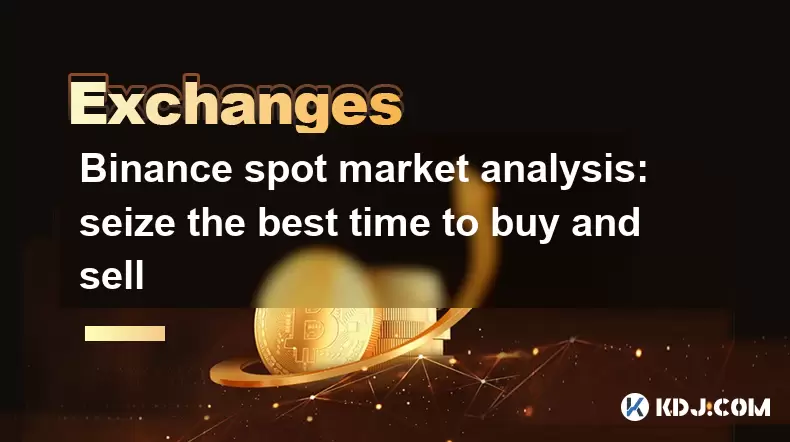
Binance spot market analysis: seize the best time to buy and sell
Jun 19,2025 at 04:56pm
Understanding the Binance Spot MarketThe Binance spot market is one of the most popular platforms for cryptocurrency trading globally. It allows users to trade digital assets at current market prices, making it essential for traders aiming to buy low and sell high. Unlike futures or margin trading, spot trading involves direct ownership of the asset aft...
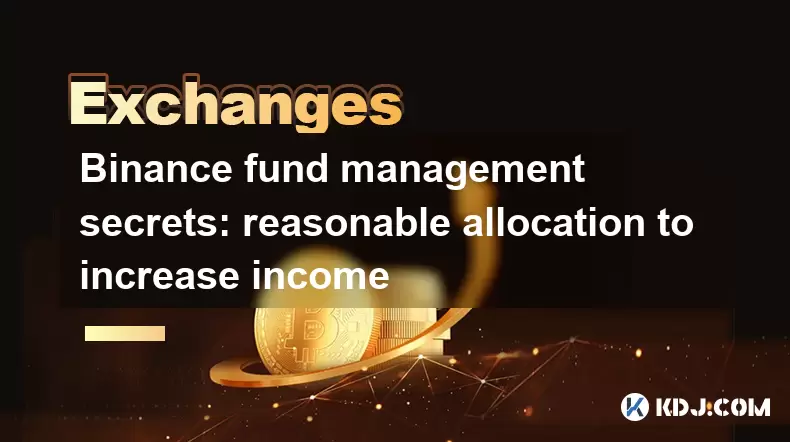
Binance fund management secrets: reasonable allocation to increase income
Jun 22,2025 at 02:29pm
Understanding Binance Fund ManagementBinance fund management involves strategic allocation of your cryptocurrency assets to optimize returns while managing risk. The key to successful fund management lies in understanding how different investment options on the Binance platform can be utilized to create a diversified portfolio. This includes spot tradin...
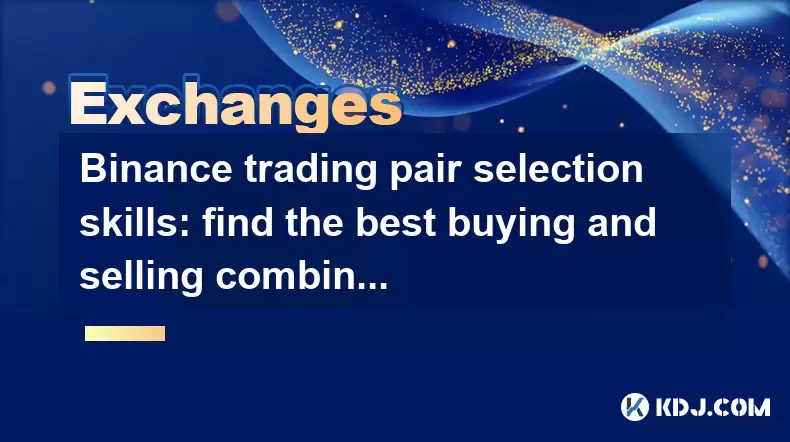
Binance trading pair selection skills: find the best buying and selling combination
Jun 23,2025 at 02:49am
Understanding the Basics of Trading Pairs on BinanceBefore diving into trading pair selection skills, it's essential to understand what a trading pair is. On Binance, a trading pair refers to two cryptocurrencies that can be traded against each other. For example, BTC/USDT means Bitcoin is being traded against Tether. Each trading pair has its own liqui...
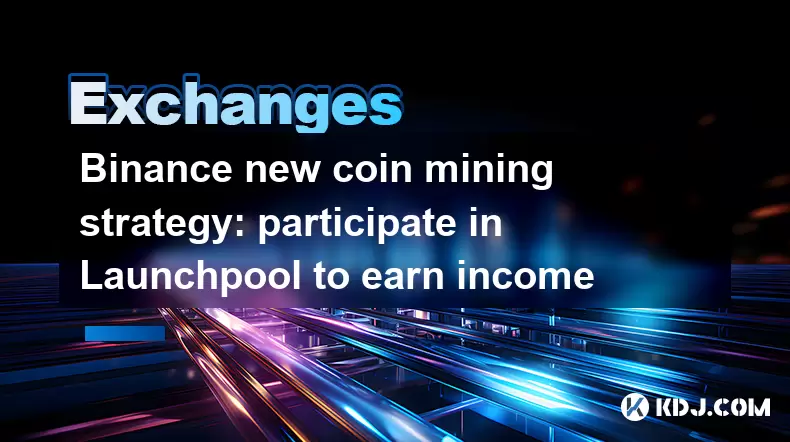
Binance new coin mining strategy: participate in Launchpool to earn income
Jun 23,2025 at 11:56am
What is Binance Launchpool and how does it work?Binance Launchpool is a feature introduced by the world’s largest cryptocurrency exchange, Binance, to allow users to earn new tokens through staking. This platform enables users to stake their existing cryptocurrencies (such as BNB, BUSD, or other supported assets) in exchange for newly launched tokens. T...
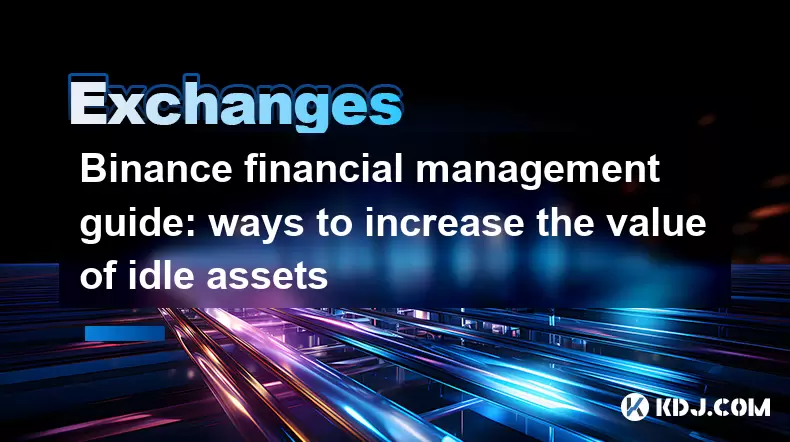
Binance financial management guide: ways to increase the value of idle assets
Jun 19,2025 at 11:22pm
Understanding Idle Assets in the Cryptocurrency SpaceIn the fast-paced world of cryptocurrency, idle assets refer to digital currencies that are not actively being used for trading, staking, or yield farming. Holding these funds in a wallet without utilizing them means missing out on potential growth opportunities. Binance, as one of the leading platfor...
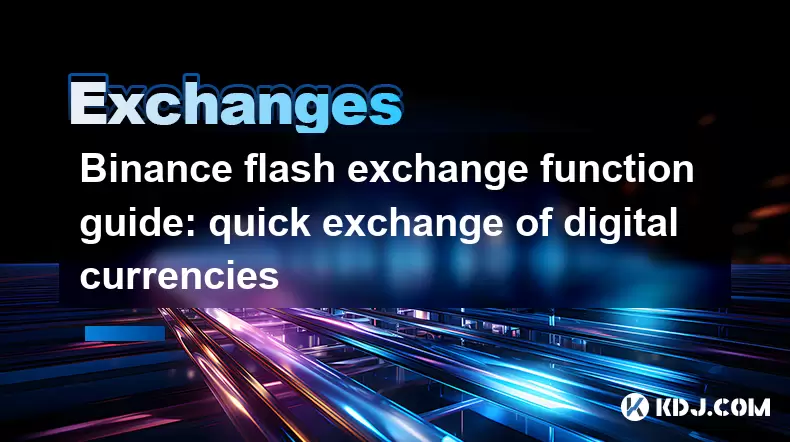
Binance flash exchange function guide: quick exchange of digital currencies
Jun 23,2025 at 12:29pm
What is the Binance Flash Exchange Function?The Binance Flash Exchange function is a powerful tool designed to allow users to instantly swap between supported cryptocurrencies without the need for placing traditional buy/sell orders. This feature simplifies the trading process by offering a direct exchange mechanism, eliminating the requirement to conve...

Binance spot market analysis: seize the best time to buy and sell
Jun 19,2025 at 04:56pm
Understanding the Binance Spot MarketThe Binance spot market is one of the most popular platforms for cryptocurrency trading globally. It allows users to trade digital assets at current market prices, making it essential for traders aiming to buy low and sell high. Unlike futures or margin trading, spot trading involves direct ownership of the asset aft...

Binance fund management secrets: reasonable allocation to increase income
Jun 22,2025 at 02:29pm
Understanding Binance Fund ManagementBinance fund management involves strategic allocation of your cryptocurrency assets to optimize returns while managing risk. The key to successful fund management lies in understanding how different investment options on the Binance platform can be utilized to create a diversified portfolio. This includes spot tradin...

Binance trading pair selection skills: find the best buying and selling combination
Jun 23,2025 at 02:49am
Understanding the Basics of Trading Pairs on BinanceBefore diving into trading pair selection skills, it's essential to understand what a trading pair is. On Binance, a trading pair refers to two cryptocurrencies that can be traded against each other. For example, BTC/USDT means Bitcoin is being traded against Tether. Each trading pair has its own liqui...

Binance new coin mining strategy: participate in Launchpool to earn income
Jun 23,2025 at 11:56am
What is Binance Launchpool and how does it work?Binance Launchpool is a feature introduced by the world’s largest cryptocurrency exchange, Binance, to allow users to earn new tokens through staking. This platform enables users to stake their existing cryptocurrencies (such as BNB, BUSD, or other supported assets) in exchange for newly launched tokens. T...

Binance financial management guide: ways to increase the value of idle assets
Jun 19,2025 at 11:22pm
Understanding Idle Assets in the Cryptocurrency SpaceIn the fast-paced world of cryptocurrency, idle assets refer to digital currencies that are not actively being used for trading, staking, or yield farming. Holding these funds in a wallet without utilizing them means missing out on potential growth opportunities. Binance, as one of the leading platfor...

Binance flash exchange function guide: quick exchange of digital currencies
Jun 23,2025 at 12:29pm
What is the Binance Flash Exchange Function?The Binance Flash Exchange function is a powerful tool designed to allow users to instantly swap between supported cryptocurrencies without the need for placing traditional buy/sell orders. This feature simplifies the trading process by offering a direct exchange mechanism, eliminating the requirement to conve...
See all articles

























































































